Figuring out whether you should plant a tree in your garden can be tricky. For example, are you interested in purple-leaf plum trees but don't know if their pros outweigh their cons? Is this tree a good option for the garden? Luckily, we've done plenty of research on these questions and have the answers below!
For anyone who wants to plant a purple-leaf plum tree, there are pros and cons to consider:
Pros:
- This tree can handle cold and hot climates
- Purple leaf plums are delicious fruits you can use for jams
- Your tree will stay a small-medium size
- This species is ornamental, with stunning leaves
- Purple leaf plum trees are less expensive than other ornamental options
Cons:
- The tree is prone to several diseases and pests
- The purple-leaf plum can be invasive
- This species doesn't thrive in urban environments
- Purple leaf plums can get messy in the spring and summer
- These decorative trees don't usually live long
In this article, we will delve into the topic of purple-leaf plum trees and discuss their pros and cons. Whether you're new to plum tree growing, have one in your yard, or need other help, we're here for you. With that said, let's dive right into this topic!

Should I Plant A Purple Leaf Plum Tree In My Garden?
If you want an ornamental tree and love plums, the purple-leaf plum tree may be an excellent choice for your landscape. Generally, this tree is hardy in cold and hot climates, covering USDA zones 4-9.
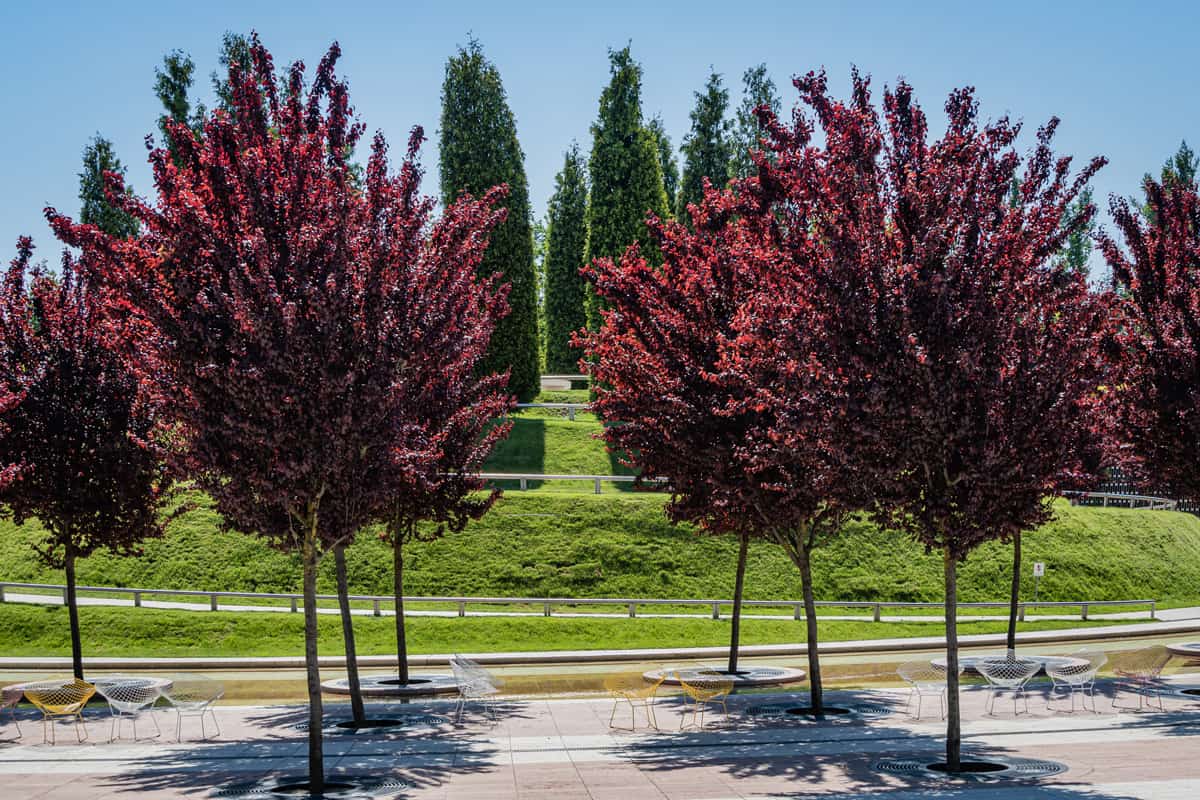
Most people throughout the United States can successfully grow one. According to experts, you want to ensure your purple-leaf plum tree gets plenty of sunlight, well-drained acidic soil for health, and plenty of attention in its younger years.
As we said, this tree species is more ornamental, showcasing deep purple foliage. In addition to its beauty, your purple-leaf plum produces fruit around July and August.
Of course, not every plum tree will be successful in your garden. Because purple-leaf plum trees are susceptible to disease and pests, this can make growing them somewhat challenging.
What Are The Pros Of Having A Purple Leaf Plum Tree?
Some pros of having a purple-leaf plum tree include its hardiness and beauty. As we mentioned, purple leaf plums can handle hot and cold weather.
Furthermore, your plum tree may stay on the smaller side, topping out at 25 feet tall upon full maturity. These trees are known to be small to medium size, making them easier to maintain.
You can also shape your purple leaf plum to stay under 25 feet from when it is planted so your tree handles pruning well. Many experts suggest pruning your purple-leaf plum tree annually because it gets so messy in the spring and summer.
Another pro to having a purple-leaf plum is that your tree will produce delicious fruit. Your plum tree may be able to produce enough fruit to make jams and desserts or even supply you with stock for a local farmer's market.
What Are The Cons Of Having A Purple Leaf Plum Tree?
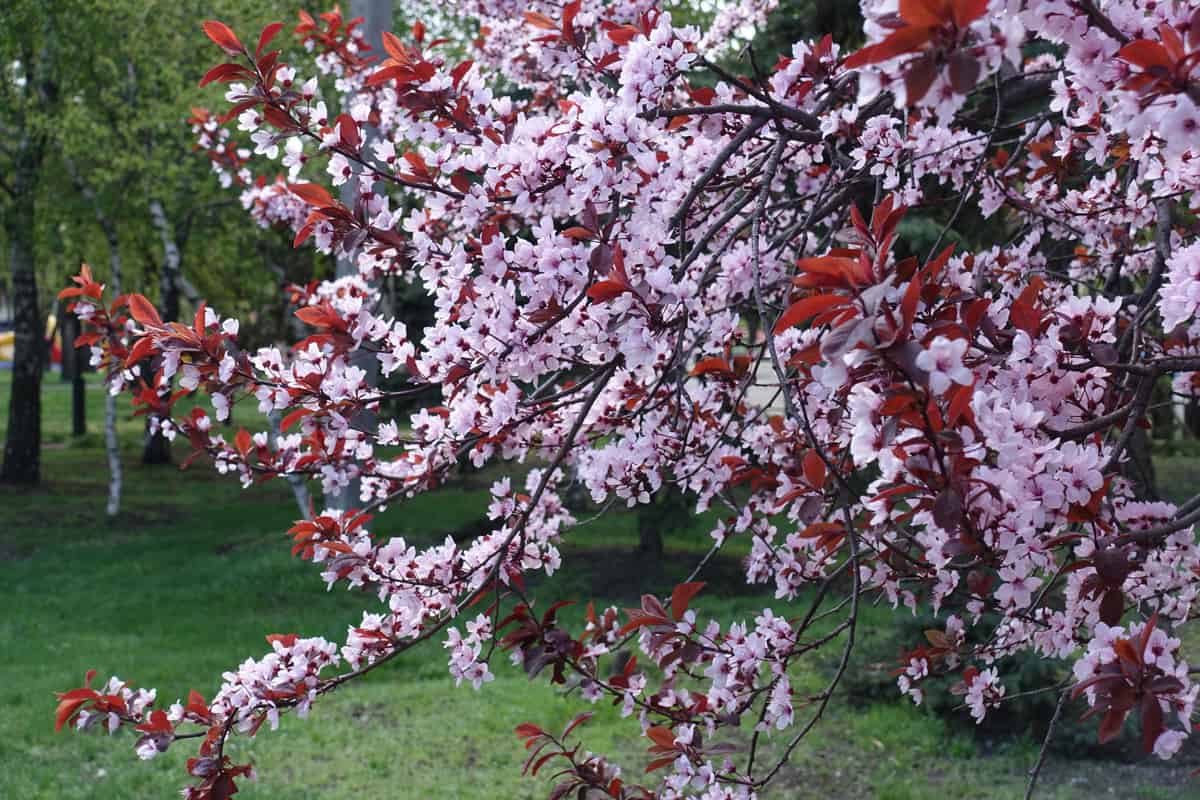
Now that you know the benefits of having a purple-leaf plum tree, there are a few drawbacks to consider. First, this tree tends to be more likely to contract a fungal disease and is a top spot for pests.
These are a few of the diseases your tree may encounter:
- leaf spot
- grey mold
- black knot
- cankers
Your plum tree may attract these pests:
- Japanese beetles
- mealybugs
- tent caterpillars
- borers
- scales
These pests and diseases can be even more devastating when your tree is young. Generally, fruit trees have more problems than trees that don't produce anything.
Another major con to purple-leaf plums is that they can be invasive. Your fruit tree may also shed its foliage and fruit through spring and summer, making a mess in your landscape.
So, besides being potentially invasive, your purple leaf plum is also quite a mess maker.
This species also lives around 20 years, and it requires a bit of maintenance. That's not too long to enjoy your beautiful plum tree.
Are Purple Leaf Plum Trees Hard To Manage?
Yes, a purple-leaf plum tree can become hard to manage. Because this fruiting tree is more susceptible to disease, pests, and premature death, you must keep a close eye on it.
One of the main reasons people don't plant purple-leaf plums is they're so needy. For example, your tree needs well-drained soil and cannot sit in moisture for long periods.
Your plum tree also needs annual pruning around mid-summer to keep it healthy and neat. Without a proper trim, your tree will likely develop a fungal disease, get sick, and die.
In addition, your purple-leaf plum tree needs weekly watering and won't respond well to drought.
The soil surrounding a purple-leaf plum tree should also lean acidic and be filled with nutrients. That is crucial for keeping your tree healthy and happy.
That said, once your tree reaches mature size and is a few years old, maintenance won't be as intense. The first few years will require your attention more closely; from there, you can let your plum take off!
How Fast Does A Purple Leaf Plum Tree Grow?
Your purple-leaf plum tree should grow at least 13-24 inches annually. Typically, this fruiting tree grows closer to two feet annually in good conditions, with one foot of growth being the lower end of the spectrum.
Like many fruit trees, your plum tree needs to grow strong before it can produce plums. Not planting it in a sunny spot with good drainage can prolong the wait.
Your tree may have a round, shrubby appearance in its younger years. From there, the purple-leaf plum tree should take its mature shape, producing sturdy branches that can hold plums.
Again, this may be different for every gardener. Some purple-leaf plums will show in your tree after a couple of years, while others may need 3-4 before blooming.
Since your tree can easily top out at 25 feet tall and wide, you want to focus on guiding your tree as it's young, pruning it regularly.
Overgrown branches can lead to fungal diseases and pests, which the tree is already prone to.
Check out our post How Big Does A Plum Tree Get? for more information.
Why Isn't My Purple Leaf Plum Tree Producing Fruit?
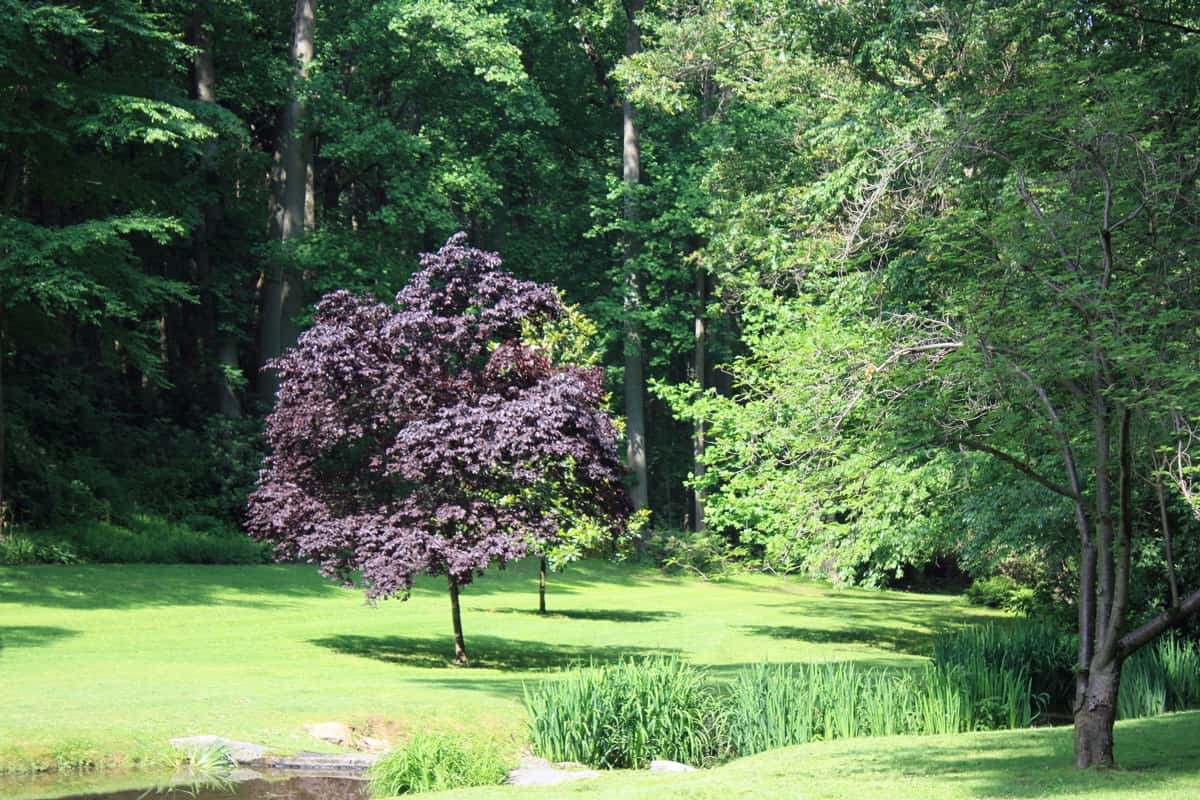
One of the main reasons a purple-leaf plum tree doesn't produce fruit is freezing weather that kills its flowers. Without blooms on your plum tree, there is no chance for fruit to form.
Unfortunately, cold snaps during spring can lead to a year without fruiting. When the weather drops below freezing unexpectedly, your tree essentially goes into shock.
Another reason your plum isn't making fruit is it's infested with insects. According to professionals, when insects chew the terminal ends, shoots, and flowers, this can cause plums to have trouble forming.
An additional factor that could be to blame for little to no fruiting on a plum tree is using too much nitrogen fertilizer on your plant. When you do this, your tree can have trouble properly making fruit.
Are Purple Leaf Plum Trees Self-Pollinating?
Yes! Purple-leaf plums are self-pollinating fruit trees. Although some fruiting plants need a partner to make their fruit, your plum tree can do this independently.
However, your purple-leaf plum tree is more of an ornamental species. Therefore, it's not going to produce hundreds of plums each year.
Your tree will be showy, making flowers and deep purple foliage instead of focusing on plum production. Nearby fruit trees can pollinate your purple-leaf plum, although this isn't required.
To Finish Up
Whether you have a purple-leaf plum tree or want to grow one, it's always good to understand the pros and cons. This tree has benefits like being showy, adaptable to hot and cold weather, and producing fruit.
However, some drawbacks to planting purple-leaf plums include potential disease, insects, invasive behaviors, and premature death.
These trees tend to be more high-maintenance when young, eventually becoming self-sufficient as they mature. Your tree will live about 20 years, so that's not too long to enjoy your beautiful tree.
Want to read more? Here are some related garden articles we think you'll love:
Is Purple Leaf Plum Tree Fruit Edible?
Plum Tree Dying – What To Do (lnc. Victoria, Purple, And Ornamental)?


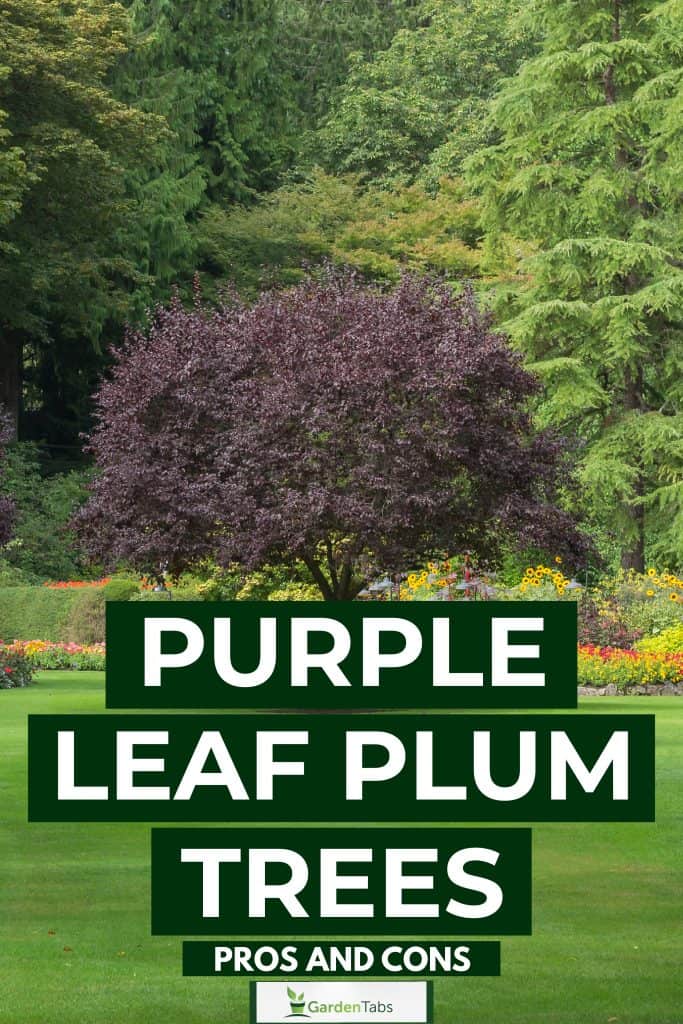

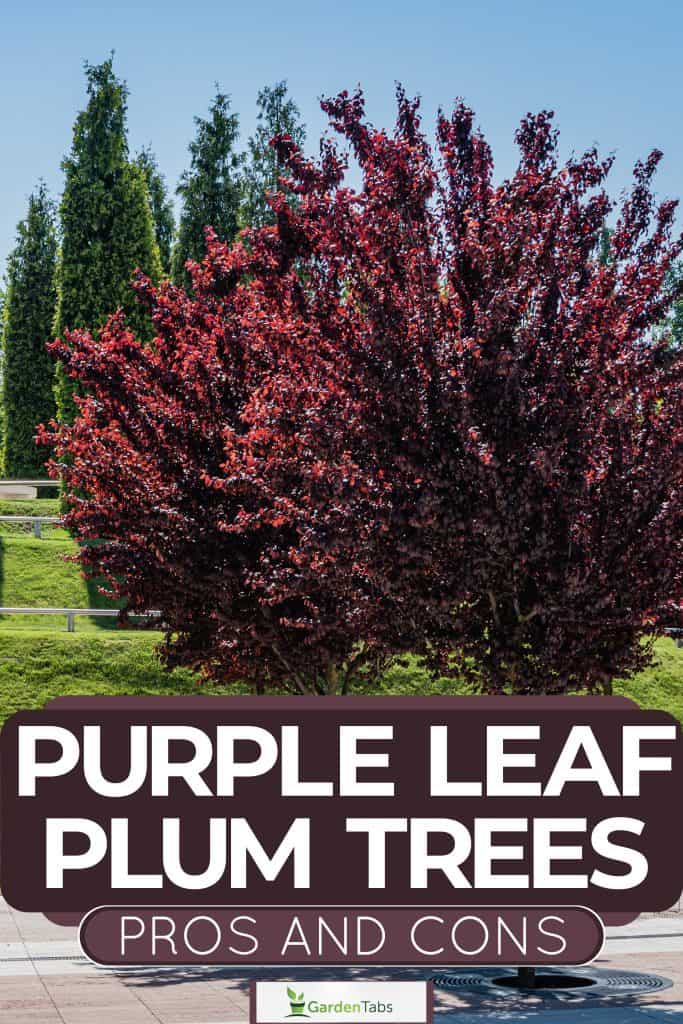
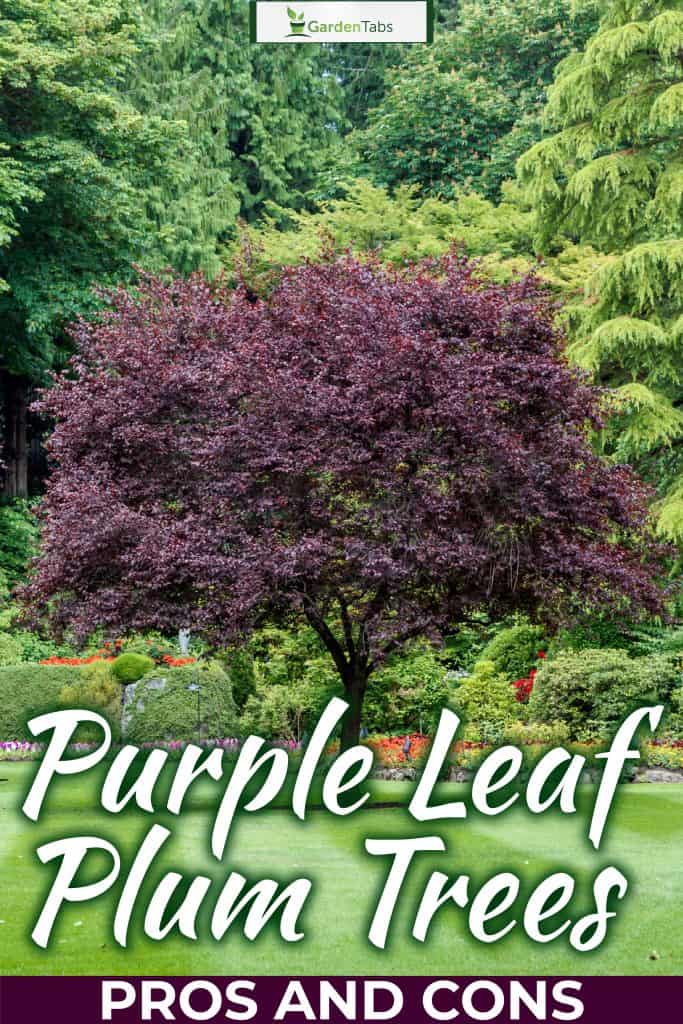
Can the Dwarf purple leaf plum be grown in large containers ?